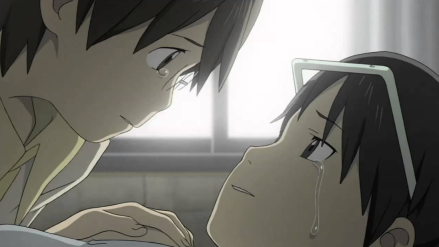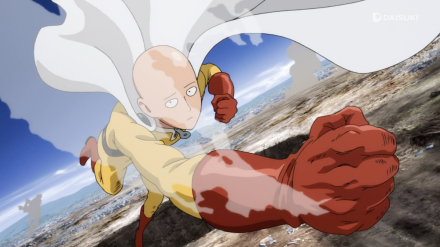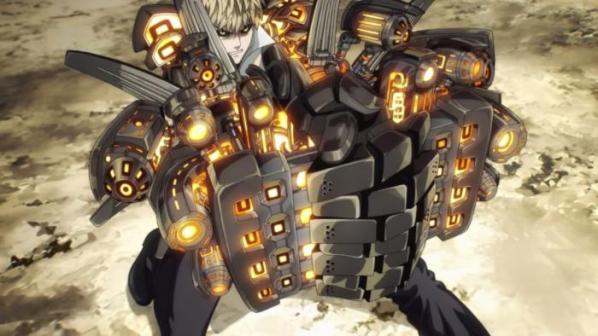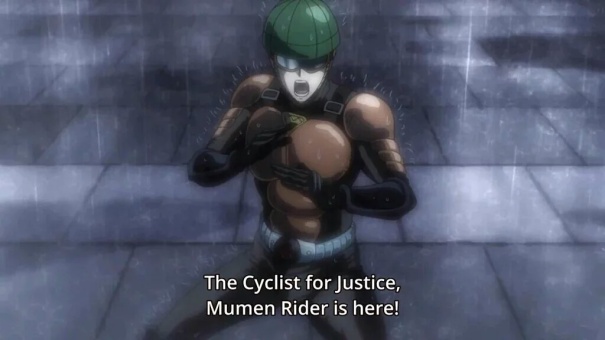A brief spoiler-free review of the original 26-episode Spring 2007 anime “Den-noh Coil” (also translated as “Dennou Coil”), animated by Madhouse, created and directed by Mitsuo Iso.
Nostalgia, Child’s Play, & the Internet
In the near future, people have integrated augmented reality their daily lives through the use of specialized cyber glasses. A virtual world of “E-spaces” overlays Daikoku city’s electronic infrastructure. Viruses hide in plain sight, yet only glasses wearers can see these virtual hazards. Children in particular find immense joy in tracking down old abandoned E-spaces and using them for their own game. Hacking spaces, switching servers, discovering damaged domains—it’s like the coolest game of geocaching you could ever play! Some have even taken interest in hunting for metabugs, small gems which can be converted into currency or special items in the digital world.
This brings us to Yuuko “Yasako” Okonogi and her family, who have just moved to Daikoku City despite rumors of some people mysteriously disappearing. While searching for her cyberdog Densuke, Yasako encounters Fumie Hashimoto, a playful classmate and member of “Coil.” Comprised of other community youngsters, the small unofficial detective agency helps glasses wearers solve various cyber troubles. The girls’ meeting also brings Yasako’s snappy grandmother back into her life, who just so happens to run a shop that sells illegal tools which interact with the virtual world AND is the bright mind behind Coil.
Like any program, however, there are many bugs in the system, dubbed “illegals.” Some are lost, aimlessly wandering the digital landscape to eternity. Other illegals exist to cause mayhem, and some are harmless yet like to follow humans around, much like a household pet would. Another girl, Yuuko “Isako” Amasawa, is also investigating these corrupt spaces, but her abrasive hacking style (and attitude) deters her from making friends. The kids in Coil are determined to discover the truth behind the mysterious viruses and disappearances, but little do they know what corruption lurks on the dark side of the web.

Virus Attacks & Friendly-Fire Hacks
For the entirety of the series, Yasako serves as our blank canvas as Fumie guides us through the ins and outs of the virtual world. The two girls become best friends, and Fumie’s intelligent yet loud personality meshes well with Yasako’s soft naivete. Navigating through scary virus attacks and friendly-fire hacks from their fellow classmates, the go quite well together as a pair.
But, if there’s one giant brick wall stopping them from having fun in this digital space, it’s going to be Yuuko Amasawa. To avoid confusing the two Yuuko transfer students, the kids call her Isako. And boy is Isako one tough nut to crack. She’s standoffish, rude, and totally not interested in making friends; rather, her eyes are set solely on collecting metabugs for her own personal mission.
To complicate matters, the incredibly obnoxious and bratty Daichi Sawaguchi (along with his self-named “Hackers Club” goons) are also trying to snatch up metabugs, drawing out much of the conflict in the series’ first half. As things get weirder and weirder on the digital side, these hidden secrets tell of disastrous things happening in Daikoku City. Maybe, just maybe, the forces undermining the kids’ efforts will allow them to start seeing eye-to-eye.

Given that practically the entire cast of this one is made of children, I’m SO glad that the English dub from Maiden Japan cast all the young boys with female dub actresses. (It just helps avoid the cringe of hearing a 30-year-old man voicing a ten-year-old.) I’ve never heard a dub where the children—to this extent—act and sound so much like children should. These kids are FUNny and are a hoot to watch! (And I LOVE Specs Granny!!)
Whether chasing down urban legends, stalking haunted hotspots, or connecting dreams and memories across time and digital spaces, these kids go on quite the coming-of-age journey. Together, they prove that the Internet can be a fantastic place for self-discovery—but also a potentially hazardous landscape without practicing proper safety.

Integrating CG with the Digital World
Although the show has a quiet, lukewarm start to it, the talents at Madhouse breathe astonishing life into Den-noh Coil. Mitsuo Iso not only directed AND created the entire story—he also drew many of the key frames himself! His style is jerky yet detailed, full of motion and expression. There’s some really well-animated character work done here, and it’s all in the details. Whether fidgeting children, readjusting glasses, or making silly faces, the animation fully encapsulates the behaviors and mannerisms of goofy 6th graders.
Despite coming from an era of anime where the use of CGI was almost purely experimental, the 3D CG works remarkably well here since Den-noh Coil‘s world is deeply intertwined with the digital space of the Internet. Muted, drab, washed-out Tokyo landscapes provide a unique, small-town community atmosphere to the series. Much of the AR special effects work is done with CG, giving us a nice distinction between the bleak watercolor skies of the real world and the quirky (yet dangerous) E-spaces that the kids are so fond of exploring.
I also found the entire soundtrack of the show to add a unique quality to Den-noh Coil. The series is accompanied by soft acoustic guitar and the quiet cascade of digital sound effects whenever the kids are dueling in back alleyways. Tsuneyoshi Saito’s OST, as with most of his other works (most notably Fafner), showcases the strengths of orchestral music. If we’re not getting weaving wind ensembles, we may hear the solemn beat of tribal drumming, or even the tender, evocative enchantment of the piano. It’s classic, and this kind of music will always win me over.

Connection, Disconnection, & Loss
Den-noh Coil takes a bit to get going, but enjoy its comedy/slice-of-life beginning. Trust me. These early-middle standalone episodes explore youth, life, and living side-by-side with this digital world, and are by far some of the strongest in the series. (The beard episode was especially great.) I’d argue that the episodic direction in the middle is far stronger than the main overarching story. Then again, I just find that the episodic style suits the series’ world and setting better.
About two-thirds of the way in, this sci-fi adventure kicks up the mystery with a starkly different plot set in motion. The character drama in the middle is also strong and even stronger at the end, which ties in well with the creepier subjects of the series’ finale. It’s a striking tone switch, but it really makes for an exciting finale.

These days, no one talks about Den-noh Coil (which is partially why I was drawn to it in the first places). I think that’s sad, because it’s more relevant now than it ever was in 2007 when it first came out, and I can’t help but think how highly people would praise the series if it was put out today. Certainly, it’s one creative piece of sci-fi.
Den-noh Coil tackles themes of connection, disconnection, loss, extinction, living within boundaries, and learning to push beyond certain limits. It explores what can go wrong in a world that lives side-by-side with technology, a world that can be hacked AND hack you just the same. Some stories are silly and eccentric; others are thought-provoking and startlingly philosophical. If you’re wanting an anime that explores transience in the digital age and you’re tired of being directed to Ghost in the Shell or Serial Experiments Lain, go give Den-noh Coil some love. It’s TOO overlooked and under-appreciated, and I guarantee it’s the early 2000s sci-fi anime you never watched—but absolutely should.

What is real? Does being able to touch things make them real? If something can’t be touched, does that mean it isn’t real? What things are really, truly here? What things are actually here for sure? — Yuuko “Yasako” Okonogi
Afterword
I had to sit on my rating for Den-noh Coil for a while. On one hand, it’s slow, a bit drab, and unnecessarily confusing with all its technobabble nonsense. On the other, however, it’s surprisingly dynamic and full of interesting ideas. And you know what, it’s for these reasons that I welcome Den-noh Coil as a certified “Cafe Mocha” title. THIS right here is what we call an anime gem, and you should seriously consider adding it to your watch list if you love sci-fi or augmented reality in the slightest! Had I watched it as a child, I couldn’t even begin to imagine the boundless fun I would’ve had with it! Are you one of the rare few who have seen Den-noh Coil? Please let me know, as I’m looking for fellow Coil kids to love this show with! Thanks for reading, ’till next time!
– Takuto























